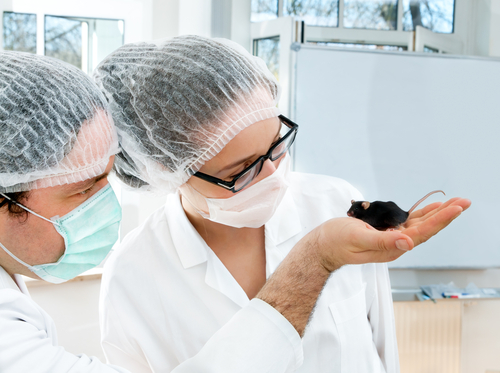Stem Cell Transplants Using Nasal Delivery Show Promise in Huntington’s Mouse Model

Stem cell therapy delivered via the nose led to longer lives and evidence of better circadian (internal “clock”) activity in a mouse model of Huntington’s disease, and may offer a way of using these treatments in people, a study reports.
The study, “Intranasal Administration of Mesenchymal Stem Cells Ameliorates the Abnormal Dopamine Transmission System and Inflammatory Reaction in the R6/2 Mouse Model of Huntington Disease,” was published in the journal Cells.
Currently, there are no effective treatments to prevent or slow disease progression in Huntington’s patients.
“Existing medications are limited and only alleviate [Huntington’s] symptoms so as to improve the quality of life of the patients, but do not extend the life span of the patients,” the researchers wrote.
Researchers are exploring a type of stem cell, known as multipotent mesenchymal stem cells (MSCs), as a possible treatment. These cells are able to transform into many different types of cells in the body, possessing regenerative and neuroprotective properties, and the capacity to preferentially migrate to damaged regions of the brain to induce tissue repair.
Intracranial (into the brain) transplants have been used to evaluate MSCs in animal models of Huntington’s. But while intracranial delivery is impressive in the number of cells that reach targeted regions, its invasive nature poses high risks to patients and weighs against its use.
Recent studies have focused on intranasal (through the nose) delivery as a potentially non-invasive route for therapies targeting the brain. Forms of intranasal administration can be as a nasal spray, nasal drops applied with a pipette, or squirts.
These efforts led researchers in Germany to evaluate treating a mouse model of Huntington’s with MSCs using intranasal administration.
MSCs were isolated from the bone marrow of young mice and engineered to express GFP (a fluorescent protein), so the cells could be visualized and tracked through fluorescence.
These MSCs were transplanted into Huntington’s mice via intranasal delivery at 4 weeks old, an age for early stage disease. A mouse group were left untreated to serve as control animals.
The transplanted MSCs were found to have a dynamic and widespread distribution within several major brain regions.
Mice given transplants and those serving as controls were then monitored for changes in their physiological and behavioral responses.
Researchers found that intranasal MSC treatment extended the life span and eased disruptions in circadian activity in the Huntington’s mice. A circadian rhythm is a natural, internal process (our internal “clock”) that regulates the sleep-wake cycle and repeats every 24 hours. Disrupted circadian activity (i.e., poor sleep patterns) are known in individuals with neurodegenerative diseases like Huntington’s, and often evident early in their course.
Treatment also tended to improve the animals’ motor abilities, as assessed by the rotarod test that measures motor coordination in rodents.
By looking at expression of different genes, researchers linked these benefits to a reduction in the expression of inflammatory genes and to better signaling of dopaminergic neurons — those that produce the neurotransmitter dopamine. (Neurotransmitters are chemical molecules responsible for nerve cell communication. Gene expression is the process by which information in a gene is synthesized to create a working product, like a protein.)
Treatment with MSCs also restored the expression of the Iba1 protein — a marker of microglial cells, a type of immune cell in the brain, as well as the structure of these cells.
“Altogether, our study provides evidence that intranasal administration of MSCs is an efficacious delivery route for HD treatment and has a high translational potential to the clinics for HD as well as other neurodegeneration-targeting therapies,” the researchers concluded.






